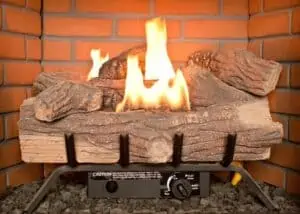How to Repair Rust on a Fireplace?
Rust on a fireplace is not only unappealing to the eye but also poses health risks if not properly cleaned. Fortunately, there are steps you can take to restore your rusted inserts.
(Searching in Google “Natural Gas Fireplace Maintenance“? Contact us today!)

Before beginning, you should make sure to remove the logs and other parts of your fireplace. You may need to disconnect the gas line to avoid any fire accidents. Once you have the logs and other pieces out of the way, you can start the actual repair. Make sure to wear appropriate safety gear, including goggles and a hood.
Using a scuff pad and a wire brush can help to remove the rust. For a more thorough job, you can use a steel brush to scrub the rust from hard-to-reach spots.
You can also try baking soda to clean up your fireplace insert. It has a similar function to the salt method mentioned above. However, it can be a little more labor intensive. If you have a hard time removing the rust, you might want to hire a professional.
If you have a cast iron fireplace, you might need to take it to a welder to get the job done. Then, you’ll need to find a safe and well-ventilated area where you can safely work on your insert. This can be difficult, especially since you’ll be lifting heavy items.
Rust on a metal fireplace can be tricky to remove. Luckily, there are several rust removers on the market today, but it’s still a good idea to follow the manufacturer’s directions. In particular, you’ll want to choose a rust-removing agent that works with metal and is easy to use.
Other methods for cleaning a rusted fireplace include using baking powder, distilled white vinegar and even a bit of elbow grease. Remember, you should always use a protective coating such as a layer of tarpaper before applying any chemical. Also, you should use gloves and masks as you work. Lastly, you’ll need to be patient. As with most restoration projects, the process will take some time.
Regardless of which method you use, remember to rinse off the residue well. A dry rag is helpful in this regard. Afterward, use a fan to dry the rusty areas.
Another option is to coat the rust with a high-temperature spray paint. While this doesn’t prevent rust from forming in the future, it does keep the surface of the metal from absorbing moisture. Ultimately, it’s important to choose a rust-proof paint. Moreover, you may want to consider having a certified chimney company install stainless steel components to ensure you have a rust-free fireplace for years to come.
Depending on how badly your fireplace insert has rusted, the above may not be enough to revive your sagging firebox. In the end, you’ll need to pull out the entire insert to start the actual restoration process. Doing so can be a little challenging, but it’s well worth it. After all, the effort will pay off in the form of increased energy efficiency and an attractive looking fireplace!

